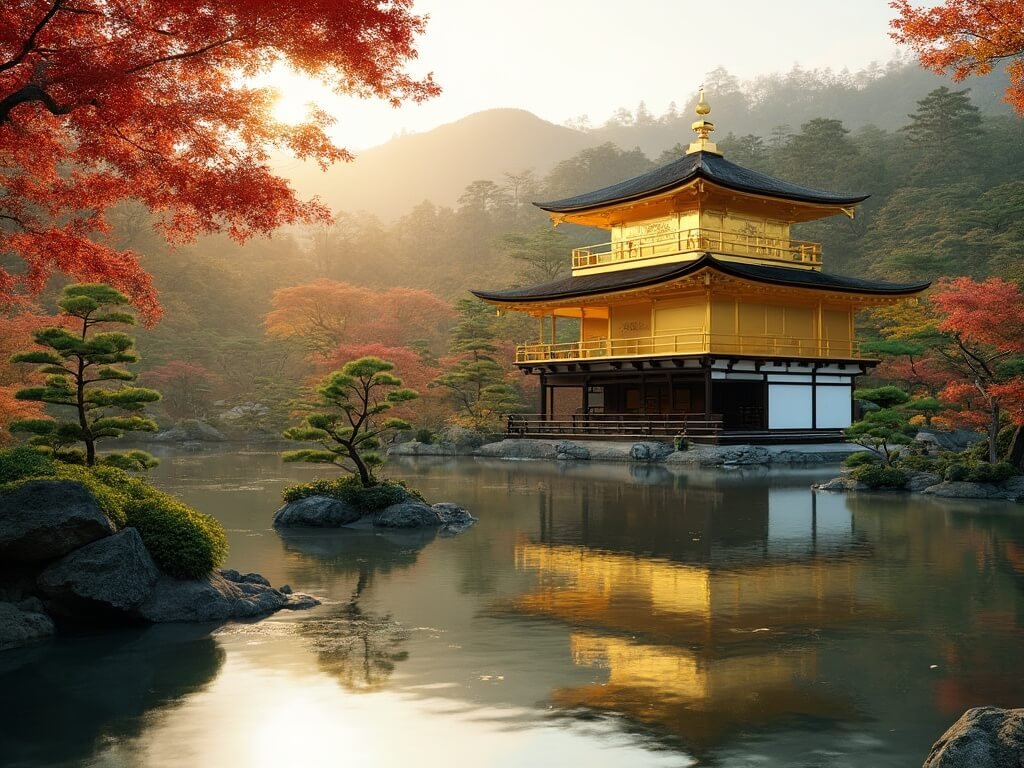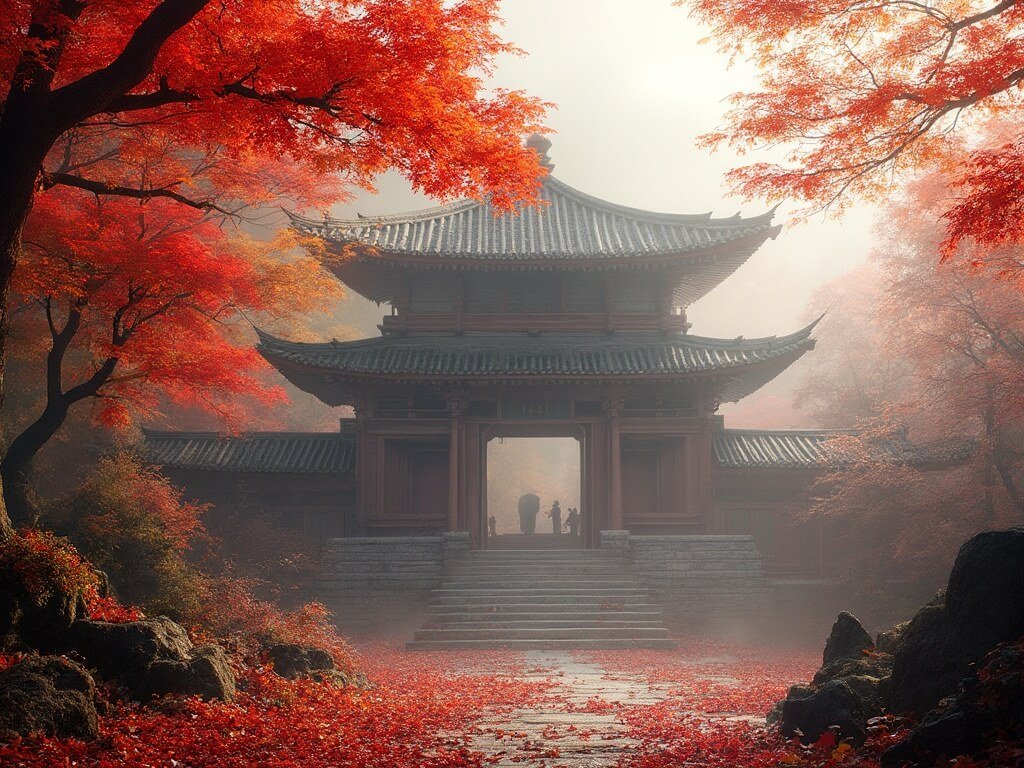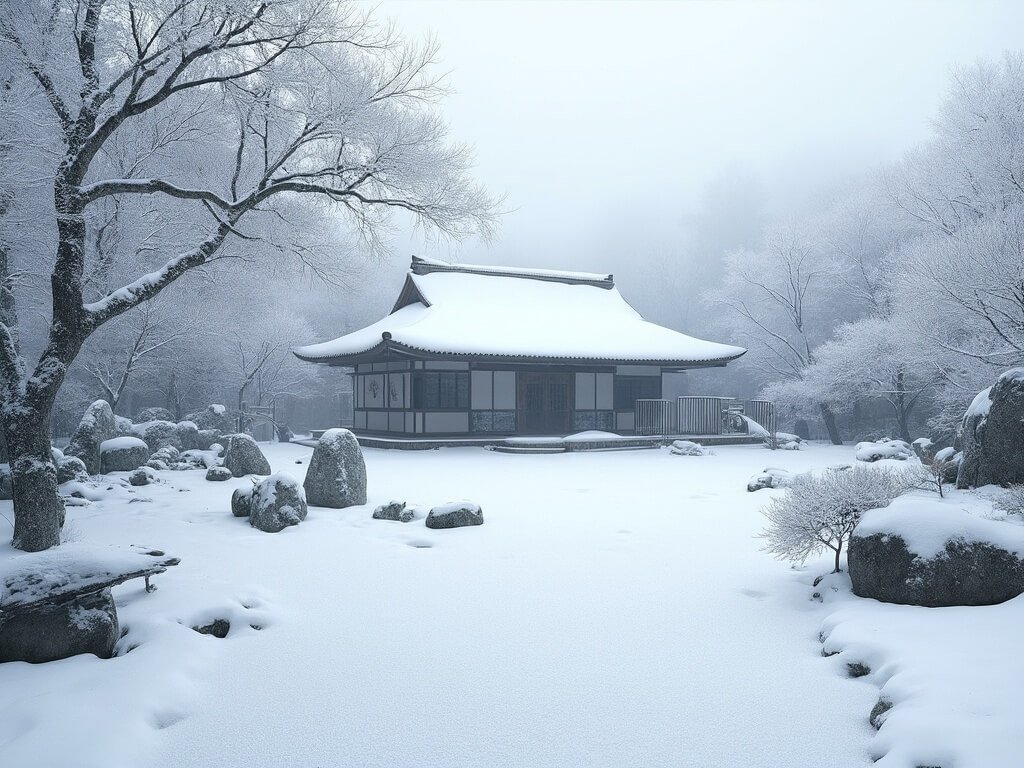Have you ever wondered what makes Kyoto’s temples so extraordinary?
Let me take you through a journey that’s been brewing in my mind since my first visit to this magical city. Kyoto isn’t just another destination – it’s a living museum of spiritual history, where every stone and wooden beam whispers centuries-old stories.
Why Kyoto’s Temples Are the Heartbeat of Japanese Culture
Imagine a city that served as Japan’s imperial capital for over 1,000 years. That’s Kyoto – a concentration of religious, political, and cultural development that’s unmatched anywhere else in the world.
Key Temple Stats That’ll Blow Your Mind:
- 1,600+ Buddhist temples
- 400+ Shinto shrines
- Multiple UNESCO World Heritage Sites
- Thousands of years of unbroken spiritual tradition
The Temple Icons You Can’t Miss
1. Kinkaku-ji (Golden Pavilion): Pure Magic in Gold
I’ll never forget standing before this breathtaking structure. Two floors completely covered in gold leaf, reflecting perfectly in the surrounding pond – it’s like something from a dream.
Highlights:
- 14th-century origins
- Rebuilt in 1955 after fire damage
- UNESCO World Heritage Site
- Stunning photogenic location
Pro Tip: Visit early morning to avoid massive tourist crowds.
2. Kiyomizu-dera: Where Architecture Defies Gravity
Founded in 778 and rebuilt in 1633, this temple is a testament to Japanese architectural genius. Its massive wooden stage, constructed without a single nail, offers panoramic views over Kyoto that will leave you speechless.
Key Features:
- Dedicated to Kannon, goddess of compassion
- Nail-less wooden construction
- Breathtaking city views
- Incredibly popular during cherry blossom and autumn seasons
Spiritual Diversity: More Than Just Buildings
Kyoto represents a beautiful intersection of spiritual traditions. Buddhism, Shintoism, and Zen philosophy aren’t just coexisting – they’re beautifully intertwined.
The temples here aren’t museums. They’re living, breathing spaces of meditation, cultural practice, and spiritual exploration.
Architectural Marvels: Beyond Stone and Wood
Kyoto’s temples showcase extraordinary design principles:
- Elevated wooden floors
- Intricate hand-carved details
- Thatched roofs
- Zen rock gardens (karesansui)
- Meditation spaces integrated with natural landscapes
For more on how traditional Japanese design influences modern living, check out our article on the modern Japanese house.
When to Visit: Timing is Everything
Peak Seasons:
- Cherry Blossom (Spring)
- Autumn Foliage (Late October-November)
Pro Traveler Hack: Early mornings and weekdays offer the most serene experience with fewer tourists.
My personal recommendation? Arrive just after sunrise. The soft morning light transforming these ancient structures is something no photograph can truly capture.
A Journey Beyond Sightseeing
Temple exploration in Kyoto isn’t just sightseeing – it’s a spiritual journey that connects you with centuries of human contemplation, artistic expression, and cultural depth.
As the morning mist starts lifting over Fushimi Inari’s thousands of vermilion torii gates, you’ll realize these aren’t just temples. They’re portals to understanding Japan’s soul.
Curious how Japanese philosophy reflects in nature design? Discover the art of harmony in our guide to the Wabi-Sabi garden.
The paths between these sacred spaces are about to get even more intriguing…
The Hidden Secrets of Temple Experiences: What Guidebooks Won’t Tell You
When exploring Kyoto’s temples, understanding cultural nuances transforms a simple visit into a profound journey.
Decoding Temple Etiquette: Your Unwritten Survival Guide
Most tourists make embarrassing mistakes without realizing it. Here’s the insider knowledge:
Temple Dos:
- Remove shoes before entering indoor spaces
- Walk quietly and respectfully
- Follow designated pathways
- Bow slightly when entering sacred areas
- Use quiet voices during visits
Temple Don’ts:
- Never point cameras at sacred artifacts
- Avoid touching statues or religious objects
- Don’t consume food or drinks inside temple grounds
- Refrain from loud conversations
- Dress modestly – no revealing clothing
The Spiritual Mathematics of Japanese Sacred Spaces
Every temple follows intricate design principles that aren’t random – they’re mathematical poetry.
Ancient Japanese architects understood something profound: Space isn’t just physical. It’s an energy calculation.
Temple Design Secrets:
- Precise geometric alignments
- Strategic positioning relative to natural landscapes
- Harmonizing human-made structures with environmental elements
- Creating contemplative spaces through calculated spatial relationships
Navigating Temple Costs: Smart Traveler Strategies
Average Temple Entrance Fees:
- Standard temples: 300-600 Japanese Yen
- Complex historical sites: 800-1,500 Japanese Yen
- Multi-temple passes available in some districts
Pro Tip: Purchase a combined temple pass in Higashiyama district to save significant money.
Seasonal Temple Experiences: Nature’s Sacred Rhythms
Spring (Cherry Blossom Season):
- Soft pink petals create ethereal atmospheres
- Temples become living watercolor paintings
- Increased tourist traffic
- Photography opportunities peak
Autumn (Foliage Season):
- Crimson and golden leaves frame ancient structures
- Cooler temperatures make walking more comfortable
- Less crowded than spring
- Spiritual energy feels more introspective
Winter:
- Snow-covered temples offer surreal landscapes
- Fewer tourists mean more intimate experiences
- Some temples host special winter meditation sessions
- Photographic opportunities for minimalist architecture lovers
Technology Meets Tradition: Modern Temple Experiences
Surprising Innovations:
- Virtual temple tours for global audiences
- Multilingual audio guides
- Smartphone apps providing historical context
- Digital preservation of ancient artifacts
- Interactive historical recreations
Preservation Challenges: Protecting Living History
Kyoto’s temples face significant conservation challenges:
- Rising tourist numbers
- Natural degradation
- Climate change impacts
- Maintaining authentic historical integrity
Conservation Budget: Estimated 2-3 billion yen annually across major temple complexes.
Your Personal Temple Transformation
Temples aren’t just architectural marvels. They’re portals to understanding Japanese spiritual consciousness.
Each stone, each wooden beam carries generations of meditation, philosophy, and human contemplation.
When you walk through these sacred spaces, you’re not just a tourist. You become part of an unbroken spiritual lineage stretching back centuries.
Final Wisdom: Beyond Sightseeing
Kyoto’s temples teach us something profound: True travel isn’t about checking locations off a list. It’s about experiencing the soul of a culture.
Your temple journey begins not with a map, but with an open heart and quiet mind.
Welcome to the mystical world of Kyoto’s ancient temples – where history breathes, and spirituality speaks.
For a curated list of Kyoto’s best temples and shrines and an in-depth view into historic temples in Kyoto, explore further.
Interested in the cultural aesthetics behind these sacred spaces? Discover more on Scandinavian-Japanese interior, Japandi architecture, Japandi decor, wabi-sabi painting ideas, and creating your own wabi-sabi bedroom sanctuary.












